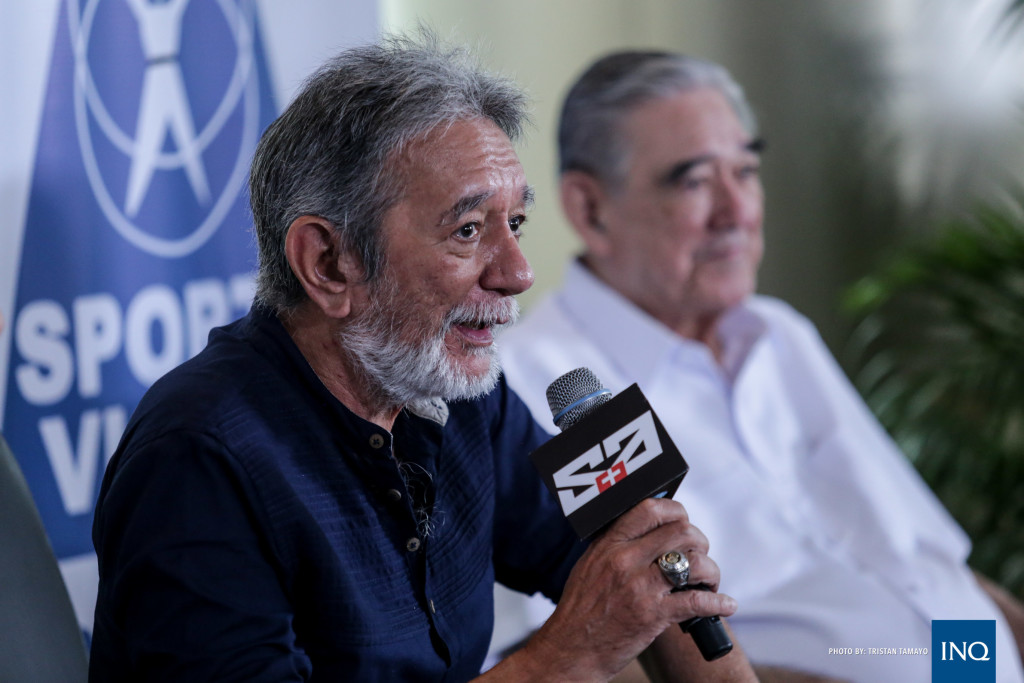
PVL Invitation Conference Opens on June 27.
To say that women’s pro volleyball in the country is enjoying a boom is an understatement, especially the past few days that saw collegiate standouts turning pro to make hay while the sun shines, so to speak.
In fact, the president of the Premier Volleyball League (PVL) himself has started the process of instilling safeguards that would protect the league, its teams, the national team and the players before things get out of hand.
And two big measures that will be implemented, according to Ricky Palou, are salary caps that will cover teams and players and instituting a Rookie Draft with eligibility guidelines.
Make no mistake about it, Palou is overly glad that the league he helped start with some friends for an investment of P25,000 per share is enjoying unprecedented success and could be one of the best sports-entertainment programs in the land—if it still is not.
But things are moving too fast. And in certain cases, speed can certainly kill. Palou has heard that the current salaries that players reportedly receive are “too much” and could bite the teams in the butt in the long run.
“I’ve heard of [collegiate stars] being offered as much as P300,000 a month plus a car,” Palou told the Inquirer in a phone interview on Wednesday as he was asked to comment on UAAP stars foregoing years of eligibility and making the jump to the pros. “Of course it could be kwentong kutsero, but I think that’s alarming.
“I never got to confirm this, but I heard some (veteran) players are even making around P400,000 a month now,” Palou went on. “That’s too much in the sense that it could turn out to be unsustainable for the teams in the long run.”
‘Out of hand’

FILE — Ricky Palou, president of PVL organizer Sports Vision. INQUIRER PHOTO
While he certainly wouldn’t want players’ earning power hamstrung, Palou said he is thinking long term when pegging a potential individual cap at P200,000 a month.
“I will be doing this to protect the teams,” he explained. “If this gets out of hand, sila din ang kawawa (they are the ones who will suffer) at the end of the day.”
And things may have gotten quite a bit out of hand already, with team expenses more than tripling since the league’s inception.
“When we started this, I was thinking that teams would spend around P8 million a year to keep their players and win championships,” Palou said. “The last time I did the rounds with some of the team owners, I heard one of them was spending P30 million.”
Palou is also planning a Rookie Draft starting next year to address the player exodus, hoping that this will prevent teams from just approaching a collegiate star and lure her out of school. Among the guardrails to be built around the draft is a minimum age requirement of at least 21 years old—which could be more or less than enough for them to complete a college education.
“A (college) diploma is very important as far as I am concerned,” Palou went on. “So with the K-12 enforced now, we could even decide to make the minimum age to 22 or 23, though some are saying that it cuts down on the productive years of the player. So we will see.”
Three new teams
This approach had been taken by the PBA from way back, with the Draft coming in effect in 1985 and a salary cap enforced a few years later in the aftermath of the Alvin Patrimonio offer sheet where the eventual four-time Most Valuable Player was offered P500,000 a month by Pepsi in the 1990s.
Among the players who decided to turn pro and forego at least two seasons of UAAP eligibility were Ateneo’s Faith Nisperos, Joan Narit and Pia Ildefonso, University of Santo Tomas’ (UST) Imee Hernandez, Far Eastern U’s Jov Fernandez and University of the Philippines’ Alyssa Bertolano and Ethan Arce.
Among those who could have stayed a year more technically due to a pandemic-suspended Season 82 were UST’s Eya Laure, Ateneo’s Vanie Gandler, the National U core of Joyme Cagande, Cess Robles and Jen Nierva and La Salle’s Mars Alba and Jolina dela Cruz.
Three teams will be making their PVL debuts starting June 27 with the Invitational Conference, and this added to the need for players—and gave monied teams the excuse to sign stars.
With 11 teams in total now, the most that the league can accept in the future is just one more.
“I think 12 (teams) is a feasible number. Going beyond that doesn’t make sense anymore.” Palou said.

